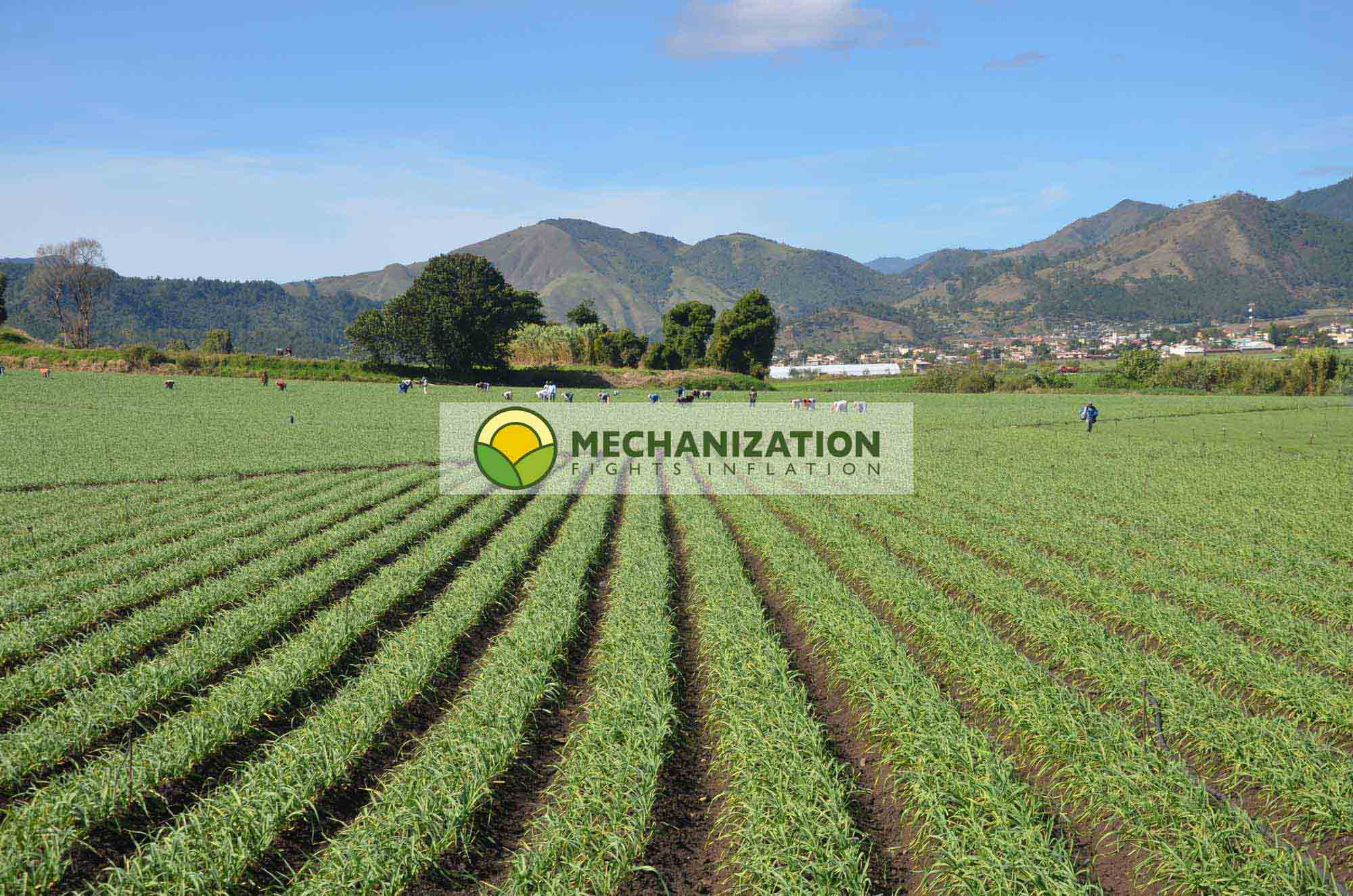Harvesting onions with a onion harvesters
LinkExchange SearchMe WhatWeDo AboutUs Sitemap Next page Harvesting potatoes with a potato harvester

Most onion harvesters work in the same way:
The harvester comes in after the haulm topper.
Onion harvesters.
Most onion harvesters work in the same way.
The harvester comes in after the haulm topper.

Harvester with two webs.

Close-up of the belt or web.
The onion harvester is fitted with an inch-wide square shaft, which rotates in the opposite direction to the harvester, underground, just below the roots of the onions. This shaft loosens the onions and leaves them ready to be picked up.
Just behind the digging shaft, a roller pushes the onions forcefully but carefully, placing them onto a web or conveyor belt with openings, similar to a sieve or grille.
The web (which may be lined with rubber) shakes the onions to free them of earth or clods.
Once the onions have reached the end of the web, they fall onto a windrow chute, which guides them so that they land in a row. They will stay there until they are later picked up by an onion loader.

The digging shaft can be seen sticking out to the left of the brown disc.

Intake roller, which pushes the loose onions up onto the intake web.
The digging shaft rotates in the opposite direction to the harvester, just below the roots of the bulb, to loosen it from the earth.
The intake roller pushes the loose onions softly against the intake web, where the machine will take them up.

Diagram of the parts at work: digging shaft, intake roller and belt or web.
The machines have one, two or three webs (conveyor belts).
The machine with just one web (it is recommended that the grille is lined) is used for delicate short-day onions, in sandy soil, where the onions do not need to be shaken to remove clods of clay.
The machine with two webs is used for firmer long-day onions, in clay soil, where they need to be shaken firmly to remove clay from the bulbs.
Occasionally, in extreme situations, machines with three webs are used.
Onion harvesters with:

One web.
.
Two webs.

Three webs.

The harvester can be made to any width, depending on the wishes of the client.
3 bed onion harverster, windrower, Samon / Ellens.
It is also possible to harvest 3 beds at the same time, placing 3 machines behind the tractor.
The first web helps to dig. Each web comes with adjustable agitators. The combination of a digging shaft and two webs is excellent for removing earth. Underneath the machine, a roller effectively pushes the ground. The windrow chute forms the onions into a row, so that they dry properly and quickly. SAMON also make harvesters with just one web, and different windrow widths. They also make machines with a hydraulic drive system.
Now we will take a closer look at some of the parts of these machines, which are sturdy, straightforward and very long lasting, requiring very little maintenance. ELLENS/SAMON BV always provides a well-examined set of spare parts, ensuring reliable, stress-free performance for many years, even in remote locations.

The chains require virtually no maintenance

Hydraulic controls, sturdy and straightforward.

Central lubrication of the digging shaft bearings.

The harvester comes with a windrow chute.

Windrow chute, to form the row of onions.

View from atop the windrow chute, to form the row of onions.
The onion harvester is fitted with an inch-wide square shaft, which rotates in the opposite direction to the harvester, underground, just below the roots of the onions. This shaft loosens the onions and leaves them ready to be picked up.
Just behind the digging shaft, a roller pushes the onions forcefully but carefully, placing them onto a web or conveyor belt with openings, similar to a sieve or grille.
The web (which may be lined with rubber) shakes the onions to free them of earth or clods.
Once the onions have reached the end of the web, they fall onto a windrow chute, which guides them so that they land in a row. They will stay there until they are later picked up by an onion loader.
To mechanise your post harvest processes:
contact us:
Telephone:
+1 239 3002374
or use our (preferable)
our contact form
Address: Farm San Isidro, Volcán, Panama.

